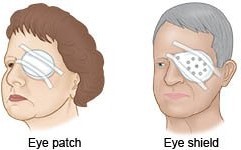The home care nurse provided self-care instructions for a client with chronic venous insufficiency caused by deep vein thrombosis. Which instruction(s) should the nurse include in the client's discharge teaching plan? (Select all that apply.)
Avoid prolonged standing or sitting.
Continue wearing compression stockings.
Cross legs at knee but not at ankle.
Use recliner for long periods of sitting.
Maintain the bed flat while sleeping.
Correct Answer : A,B,D
A. Prolonged standing or sitting can worsen venous insufficiency and increase the risk of blood pooling in the legs. Encouraging the client to move around and avoid prolonged periods of immobility can help improve circulation.
B. Compression stockings help improve blood flow by applying pressure to the legs, reducing swelling and preventing blood from pooling. The client should be instructed to continue wearing them as prescribed by their healthcare provider.
C.Crossing the legs can impede blood flow and should be avoided altogether.
D. Sitting for extended periods can also contribute to blood pooling. Using a recliner allows the client to elevate their legs, promoting better circulation and reducing the risk of complications. The nurse should recommend using a recliner when sitting for long periods of time.
E. Elevating legs during sleep is generally advised to reduce venous pressure.
Nursing Test Bank
Naxlex Comprehensive Predictor Exams
Related Questions
Correct Answer is B
Explanation
After retinal detachment surgery, it is crucial to protect the eye and the surgical repair site from accidental trauma or pressure. Providing an eye shield helps to shield the eye during sleep when the client may not have conscious control over their movements.
This can help prevent inadvertent rubbing or bumping of the eye, which could potentially disrupt the surgical repair and hinder the healing process.
Obtaining vital signs every 2 hours during hospitalization is a routine nursing intervention for postoperative care in general but is not specific to retinal detachment surgery. The frequency of vital sign monitoring may vary depending on the client's overall condition and the healthcare provider's orders.
Teaching a family member to administer eye drops may be necessary for the client's ongoing care, but it is not specifically related to the immediate postoperative period. Eye drop administration instructions can be provided as part of the client's discharge teaching.
Encouraging deep breathing and coughing exercises is a general postoperative intervention that promotes respiratory function and helps prevent complications such as pneumonia. While important for overall postoperative care, it is not specific to retinal detachment surgery.

Correct Answer is A
Explanation
It is essential for the nurse to maintain a non-judgmental and supportive attitude when caring for clients with STIs, including genital herpes. Assuring the client of confidentiality helps to create a safe and trusting environment, encouraging open communication about the client's concerns and experiences.
This approach promotes the client's well-being and allows for effective education and support regarding STI prevention, transmission, and management.
Whether you are a student looking to ace your exams or a practicing nurse seeking to enhance your expertise , our nursing education contents will empower you with the confidence and competence to make a difference in the lives of patients and become a respected leader in the healthcare field.
Visit Naxlex, invest in your future and unlock endless possibilities with our unparalleled nursing education contents today
Report Wrong Answer on the Current Question
Do you disagree with the answer? If yes, what is your expected answer? Explain.
Kindly be descriptive with the issue you are facing.
